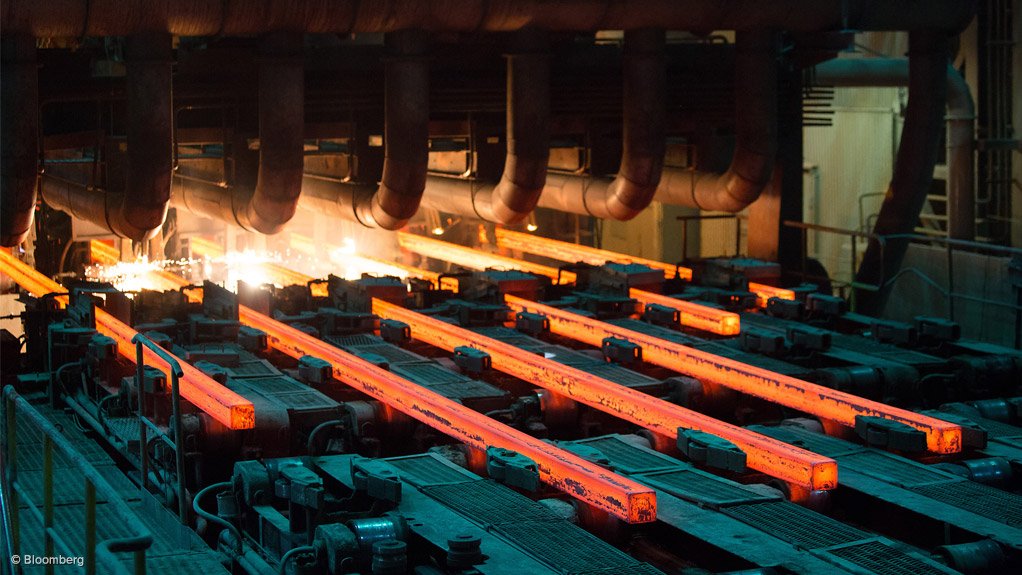Steel, engineering production slowly increase, but volatility remains
Production in the steel and engineering sector has been increasing slowly since 2008; however, severe volatility remained the overwhelming feature, with highs and lows that were often above and below the 10% average, the Steel and Engineering Industries Federation of South Africa (Seifsa) said on Friday.
The organisation pointed out that the latest data for the basic ferrous metals industry seemed to confirm that a low turning point for production was behind it, with output in June 2% higher than in May, and production up 20% year-on-year.
Further, production in the nonferrous metal industry had returned to precrisis peak level of 2007, with production in June 30% higher than in June 2012.
“Capacity utilisation in the nonferrous industry has been continuously better than that of the ferrous industry, which was affected by production disruptions, owing to facility incapacity and labour unrest,” Seifsa stated.
Further, structural and fabricated metal production has been recovering since it reached its lowest point in 2009, with current production levels about 10% below the 2007 peak.
In contrast, the production of structural metal products showed an almost continued decline since the beginning of 2008, with the June figure still showing a 15% year-on-year contraction.
“These production figures still beg the question of why the large South African infrastructure projects do not seem to have an effect on these construction-related industries, with some of the answers certainly to be found in import penetration,” Seifsa stated.
Meanwhile, the long-term trend for the production of general machinery has shown a recovery from mid-2009, with production for the six months to June being 4% higher than that of the corresponding period in 2012.
The production of electrical machinery followed similar patterns to that of general purpose machinery, albeit performing slightly better over a year-on-year period, as electrical machinery and equipment were input components into Eskom's large electricity capacity expansions and reflected the improved demand to an extent.
“However, although both these industries show positive trends, actual production patterns are highly volatile and still between 40%, for general machinery, and 10%, for electrical machinery, below precrisis levels.
Meanwhile, Seifsa on Friday also reported that it was seeing increased inflationary pressure across all indices, mainly as a result of a weaker exchange rate affecting prices domestically, and electricity prices that peaked during the winter months.
The producer price index (PPI) for intermediate goods for the month of June recorded an 8.03% change year-on-year, while the PPI for final manufactured goods came in at 5.9%.
Meanwhile, the electricity and water PPI recorded a 5.9% year-on-year increase; however, owing to the price’s strong seasonal patterns, Seifsa stated that the best way to analyse the data would be to determine the sum of the monthly percentage increases between June 2012 and June 2013, which yielded a net increase of 17.1% for the year.
Further, Seifsa stated that the reversing of the trend of Statistics South Africa's exported commodities index, from the negative values recorded in the previous months, to 2.72% year-on-year growth in June, could be a result of the sustained weakness in the rand.
The rand had depreciated 19.47%, 19.03% and 25.77% against the dollar, pound and euro respectively.
“As the exchange rate weakens, domestic producers of goods for export have the advantage and are competitive internationally, explaining the negative trend we have seen in the index. However, this competitiveness is eroded as the weak exchange rate passes through to domestic production costs, explaining the reversal in the trend,” Seifsa explained.
The Seifsa indices for zinc and lead recorded the highest percentage increases in the month of June, increasing 32.25% and 18.48% respectively, which could largely be attributed to the weak exchange rate.
Further, the domestic producers steel price index, which tracks the prices of the ten most popular steel products from upstream steel industries, recorded a 12% increase year-on-year.
Comments
Press Office
Announcements
What's On
Subscribe to improve your user experience...
Option 1 (equivalent of R125 a month):
Receive a weekly copy of Creamer Media's Engineering News & Mining Weekly magazine
(print copy for those in South Africa and e-magazine for those outside of South Africa)
Receive daily email newsletters
Access to full search results
Access archive of magazine back copies
Access to Projects in Progress
Access to ONE Research Report of your choice in PDF format
Option 2 (equivalent of R375 a month):
All benefits from Option 1
PLUS
Access to Creamer Media's Research Channel Africa for ALL Research Reports, in PDF format, on various industrial and mining sectors
including Electricity; Water; Energy Transition; Hydrogen; Roads, Rail and Ports; Coal; Gold; Platinum; Battery Metals; etc.
Already a subscriber?
Forgotten your password?
Receive weekly copy of Creamer Media's Engineering News & Mining Weekly magazine (print copy for those in South Africa and e-magazine for those outside of South Africa)
➕
Recieve daily email newsletters
➕
Access to full search results
➕
Access archive of magazine back copies
➕
Access to Projects in Progress
➕
Access to ONE Research Report of your choice in PDF format
RESEARCH CHANNEL AFRICA
R4500 (equivalent of R375 a month)
SUBSCRIBEAll benefits from Option 1
➕
Access to Creamer Media's Research Channel Africa for ALL Research Reports on various industrial and mining sectors, in PDF format, including on:
Electricity
➕
Water
➕
Energy Transition
➕
Hydrogen
➕
Roads, Rail and Ports
➕
Coal
➕
Gold
➕
Platinum
➕
Battery Metals
➕
etc.
Receive all benefits from Option 1 or Option 2 delivered to numerous people at your company
➕
Multiple User names and Passwords for simultaneous log-ins
➕
Intranet integration access to all in your organisation




















